Notes
The Storming of Mosul, Iraq on the Brink, and the Impressive Access by Reuters to ISIS Militants
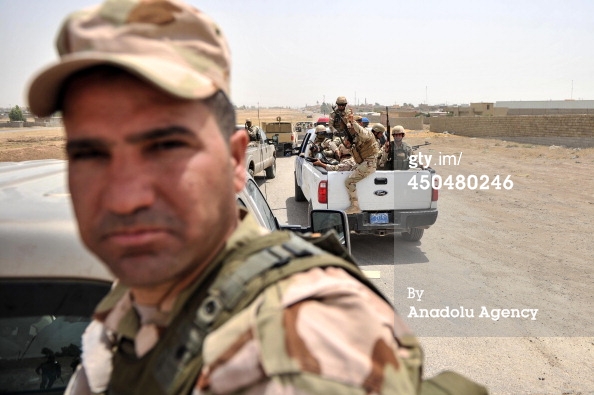
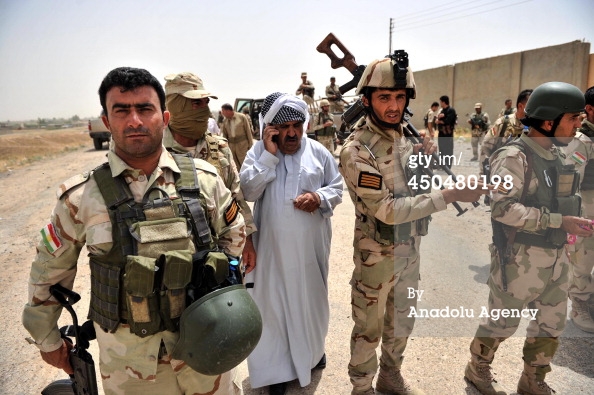
Like a nightmare one can’t awake from, Iraq — the country left factionally splintered by the US invasion over a decade ago — is now in danger of disintegrating. The catalyst for this erosion is the al Qaeda spin-off group, the Islamic State of Iraq and Syria (or ISIS) which overran the city of Mosul on Wednesday and is advancing south toward Baghdad.
A corresponding nightmare is the excruciating difficulty of visually documenting the internecine and downward spiraling battles roiling the Muslim Middle East. As Iraq threatens to go the way of Syria, we all know how dangerous it is for the newswire agencies to safely cover these conflicts. As such, the use of stringers becomes more of an issue along with the delicate management of risk. With that as the context, I wanted to take a brief measure of the newswire’s photo coverage of ISIS’s rout of Mosul and the corresponding photo coverage — or lack thereof.
On June 12th, Getty Images offered photos (above) of Kurdish Peshmerga fighters on the outskirts of Mosul after the city was overrun by ISIS, the photos supplied by the Anadolu Agency and credited to a named photographer.
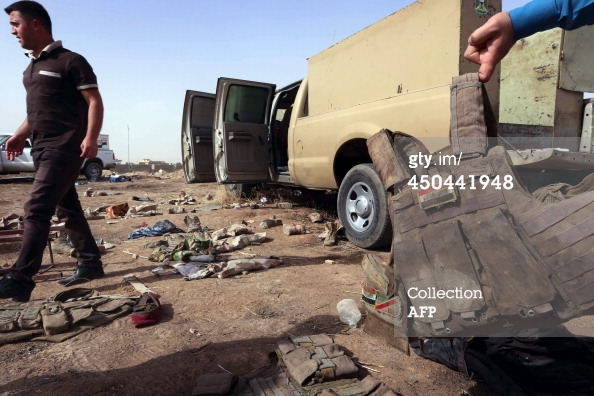
On June 11th, Getty, through it’s AFP subsidiary, also published credited photos from an abandoned Iraq Army checkpoint 10km east of Mosul. Showing abandoned gear, the post was reportedly overrun by ISIS fighters the day before. Over the two days, and through both channels, that is as close as they got.
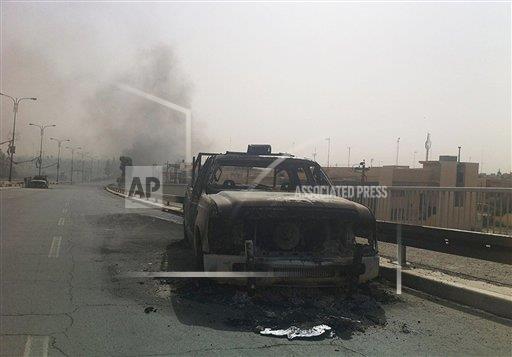
As for AP, the primary shot they offered from Mosul proper (on June 12th) was this image of a burning Iraqi police car incinerated by ISIS.

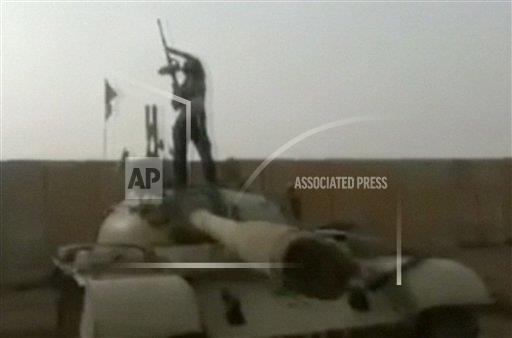
Otherwise, they published a series of screen shots from a video made by ISIL militants and uploaded to social media, these images taken on the 11th on an Iraqi Army base north of Tikrit.
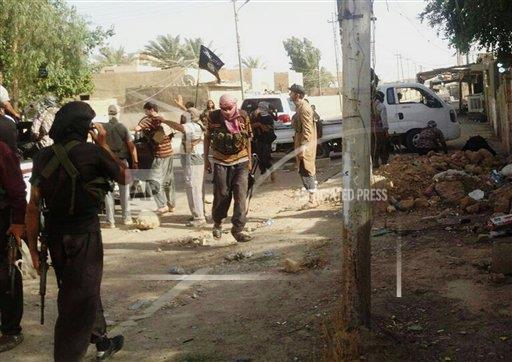
AP did manage to publish an actual photo of ISIL fighters from June 11th, the photographer unnamed, although the scene also derived from Tikrit, 140 miles to the south of Mosul.
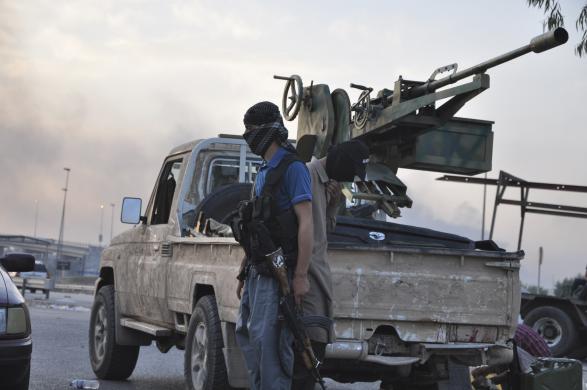
In contrast, Reuters published an entire slideshow on their home page featuring ISIS fighters in Mosul on the 11th. (Judging by the light, it seems like they were taken over the course of at least an hour, likely around dusk but perhaps around dawn.) A natural question is, how did the access come about?
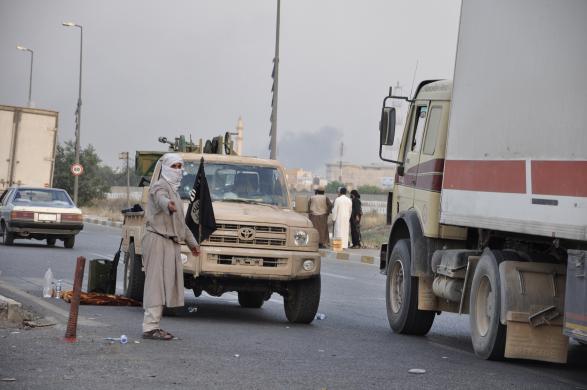
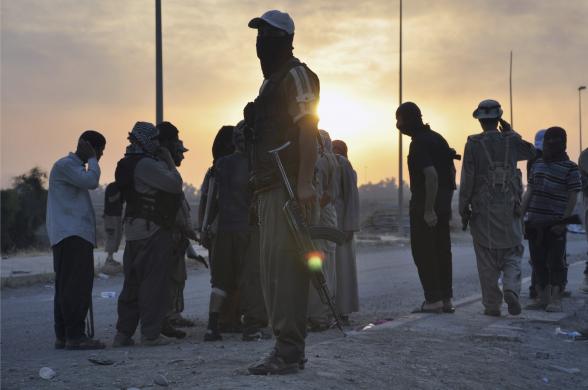
One reason I ask is because of the controversy last year over the death of a young Reuters stringer, as well as the questionable production of photos (1, 2) by anti-regime activists and partisans in Syria. I’m not suggesting that these unattributed photos were taken by ISIS fighters or partisans. I also imagine they’re quite legitimate. Impressed with the acumen and how Reuters managed this kind of access to the ISIL fighters in Mosul, however, I do think the process of procurement — while providing for the safety of photojournalists — must also secure the confidence of the audience. Part of the trauma and worldwide concern over the Syrian meltdown is how much it’s happening in the dark. If the situation in Iraq continues to deteriorate, an important thread to follow is going to be how, and under what terms, photographers and Western photo media will be willing and able to visualize it.
Note: Between AFP and the Anadolu agency, , here is their full edit of photos for June 11th. Here is the full Getty edit for Mosul + ISIS + June 12, 2014. And here is the AP edit for Mosul + ISIL. I was not able to constrict the search to June 11 and Jun 12, 2014 for the purposes of generating this link.
(photos 1 & 2: Onur Coban/Anadolu Agency/Getty Images caption: A peshmarga of Iraq Kurdistan Regional Government take security precautions on Mosul-Erbil road on the outskirts of Mosul after the militants of Islamic State in Iraq and the Levant seized Mosul, in Iraq on 12 June, 2014.caption 2: Peshmargas of Iraq Kurdistan Regional Government patrol on the region on the outskirts of Mosul to prevent infiltration of Islamic State in Iraq and the Levant militants who seized Mosul, in Iraq on 12 June, 2014. photo 3: Safin Hamed/AFP/Getty Images caption: A man displays an Iraqi army body armour in front of an Iraqi army vehicle and other items of military kit, at the Kukjali Iraqi Army checkpoint, some 10km of east of the northern city of Mosul, on June 11, 2014, the day after Sunni militants iincluding fighters from the Islamic State of Iraq and the Levant (ISIL) overran the city. Half a million people were estimated to have fled Iraq’s second largest city, as Islamist militants tightened their grip after overrunning it and a swathe of other territory, patrolling its streets and calling for government employees to return to work. photo 4: unattributed/AP caption: An Iraqi police vehicle is seen burned on a street of the northern city of Mosul, Iraq, Thursday, June 12, 2014. The al-Qaida-inspired group that captured two key Sunni-dominated cities in Iraq this week vowed on Thursday to march on to Baghdad, raising fears about the Shiite-led government’s ability to slow the assault following the insurgents’ lightning gains. Fighters from the Islamic State of Iraq and the Levant on Wednesday took Saddam Hussein’s hometown of Tikrit, as soldiers and security forces abandoned their posts and yielded ground once controlled by U.S. forces. screenshots 5 & 6: via video posted by Iraqi Revolution caption: This image made from video posted by Iraqi Revolution, a group supporting the al-Qaida breakaway Islamic State of Iraq and the Levant (ISIL) on Wednesday, June 11, 2014, which has been verified and is consistent with other AP reporting, shows militants on Al-Sharqat base north of Tikrit, Iraq. The al-Qaida-inspired group that led the charge in capturing two key Sunni-dominated cities in Iraq this week has vowed to march on to Baghdad, raising fears about the Shiite-led government’s ability to slow the assault following lightening gains. Fighters from ISIL on Wednesday took Saddam Hussein’s hometown of Tikrit, as soldiers and security forces abandoned their posts and yielded ground once controlled by U.S. forces. photo 7: unattributed/AP caption: Militias of the al-Qaida breakaway group Islamic State of Iraq and the Levant (ISIL) deploy in an area in Tikrit, 80 miles (130 kilometers) north of Baghdad, Iraq, Wednesday, June 11, 2014. Al-Qaida-inspired militants seized effective control Wednesday of Saddam Hussein’s hometown of Tikrit, expanding their offensive closer to the Iraqi capital as soldiers and security forces abandoned their posts following clashes with the insurgents. photos 8, 9 & 10: stringer/Reuters caption: Fighters of the Islamic State of Iraq and the Levant (ISIL) stand guard at a checkpoint in the northern Iraq city of Mosul, June 11, 2014.)
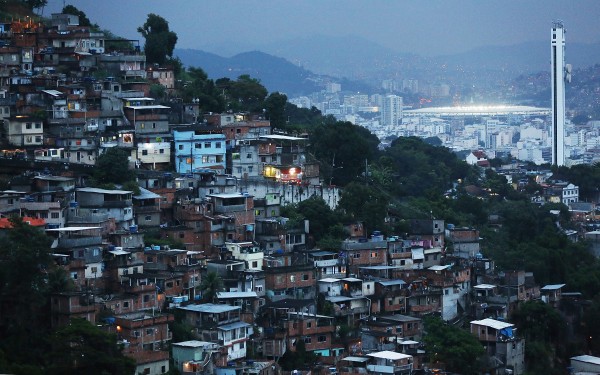

Reactions
Comments Powered by Disqus